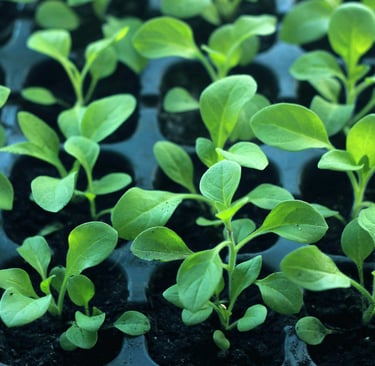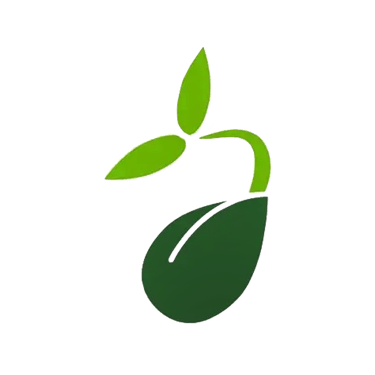Why Do Seedling Leaves Turn Yellow? 7 Science-Backed Causes & Fixes
Diagnose yellow seedling leaves like a pro! Learn how nitrogen deficiency, overwatering, iron chlorosis, and diseases cause chlorosis – with evidence-based solutions for growers.
Richard
8/9/20251 min read


Why Do Seedling Leaves Turn Yellow? 7 Causes & Evidence-Based Solutions
Yellowing leaves (chlorosis) in seedlings signal disrupted chlorophyll production. Based on horticultural research and field diagnostics, these are the primary causes:
1. Nitrogen Deficiency (Most Common)
Mechanism: Low N reduces chlorophyll synthesis (Taiz & Zeiger, Plant Physiology).
Identification: Uniform yellowing of older leaves first; veins remain green.
Solution: Apply 20-20-20 NPK foliar spray (1/2 strength) + incorporate composted manure.
2. Overwatering / Hypoxia
Mechanism: Waterlogged soil displaces oxygen → roots can’t absorb iron/magnesium (Annals of Botany, 2018).
Identification: Yellowing lower leaves + soggy soil/fungal growth.
Solution: Use well-draining media (30% perlite), reduce watering frequency, elevate trays.
3. Iron Chlorosis (High-pH Soils)
Mechanism: Iron immobilizes in alkaline soils (pH >7.0) → impairs chlorophyll production (Journal of Plant Nutrition).
Identification: Young leaves turn yellow with dark-green veins.
Solution: Apply chelated iron (Fe-EDTA), lower pH with sulfur (target pH 6.0–6.5).
4. Insufficient Light
Mechanism: Photosynthesis declines → chlorophyll breaks down (HortScience, 2020).
Identification: Generalized pale yellow + leggy stems.
Solution: Provide 300–600 μmol/m²/s PPFD (LEDs recommended).
5. Disease Pressure
Pathogens: Fusarium spp., Pythium root rot (Phytopathology).
Identification: Yellow spots/margins + brown lesions/wilting.
Solution: Drench with Bacillus amyloliquefaciens (bio-fungicide) or azoxystrobin.
6. Temperature Stress
Mechanism: Cold soils (<15°C/59°F) inhibit nutrient uptake (Scientia Horticulturae).
Identification: Yellow mottling + purple stems (phosphorus lockout).
Solution: Use seedling heat mats (target 18–24°C root zone).
7. Chemical Toxicity
Causes: Herbicide drift, saline irrigation water (EC >1.2 dS/m).
Identification: Sudden yellowing/burning of new growth.
Solution: Leach soil with low-EC water, avoid aminopyralid-contaminated compost.


Preventative Protocol:
Media: 60% peat moss + 30% perlite + 10% vermicompost (pH 6.2–6.8).
Nutrients: Pre-charge media with 2g/L slow-release fertilizer (Osmocote).
Watering: Maintain 20–30% VWC (volumetric water content) via soil probes.
Monitoring: Use SPAD meter to track chlorophyll content (target >35 SPAD units).
